Different Types of Rocks with Names and Examples
Whether you’re an avid rockhound or someone who just loves nature, you notice rocks everywhere. Fact is, you can’t even take the dog for a walk down the street without stepping on them. Rocks are everywhere you look.
And with so many rocks everywhere around us, you may be surprised to learn that there’s really only three different kinds of rocks out there. I know when I first learned this is kind of blew me away!
So if you’re interested in learning about what those three types of rocks are, as well as learning what some examples of each type of rock are…then keep on reading!
Let’s get right to it!
What Are The 3 Types Of Rocks?
In short, there are three different types of rocks that every rock you meet can be classified as. The three types of rocks are:
- Igneous Rocks
- Metamorphic Rocks
- Sedimentary Rocks
Igneous Rocks
The first type of rock on this list are the igneous type of rocks. Igneous rocks are more than just a cool name. They’re actually cool in another way.
Igneous rocks are actually cooled and hardened magma. That means that Igneous rocks are formed when molten rock from deep within the earth rises to the surface (lava) and cools. Sometimes the magma will cool inside the earth before it even reaches the surface.
It’s this cooling period that decides what kind of igneous rocks that magma turns into. Because there’s two types of Igneous rocks.
- Intrusive
- Extrusive
Intrusive Igneous Rock
Intrusive igneous rocks form when magma cools slowly thousands of feet below the Earth’s surface. Most intrusive rocks have large, well-formed crystals. Examples of intrusive igneous rocks include granite, gabbro, diorite and dunite.
Extrusive Igneous Rock
Extrusive igneous rocks form when magma reaches the Earth’s surface a volcano and cools quickly. Most extrusive (volcanic) rocks have small crystals. Examples of extrusive igneous rocks include basalt, rhyolite, andesite, and obsidian.
Examples of Igneous Rocks
Andesite
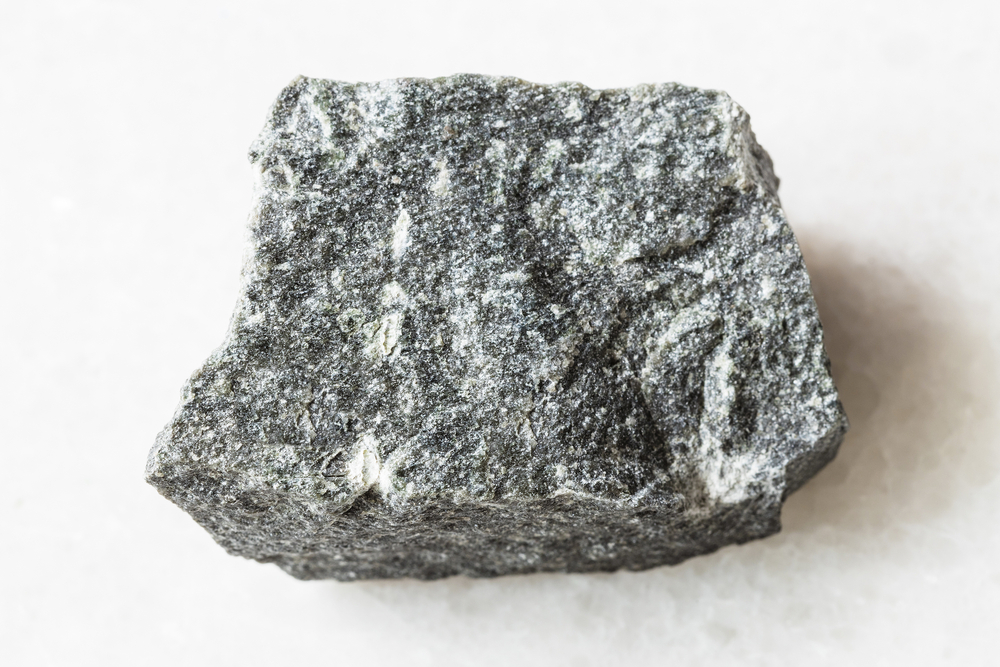
Andesite derives its name from its prevalence in the towering Andes mountains of South America. This immense mountain range stretches over 7,000 km along the western edge of the continent, making it the longest in the world.
Andesite forms when magma from subduction zone volcanoes rapidly cools at the surface. Its abundance in the Andes stems from the ongoing subduction of the oceanic Nazca Plate under the continental South American Plate. This collision of tectonic plates fuels the volcanoes that produce andesitic lava.
Beyond its namesake mountains, andesite can be found at many convergent boundaries where oceanic crust is plunging beneath continental landmasses. Interestingly, andesite has also been discovered in meteorites that crashed in Antarctica’s Graves Nunataks region, adding an extraterrestrial source to this rock’s origins.
Basalt

With its distinctive dark color, basalt is one of the most ubiquitous rocks on Earth and beyond. This fine-grained igneous rock predominates in the ocean basins, underlying the majority of the seafloor. Its vast abundance stems from effusive lava flows at divergent boundaries where tectonic plates are pulling apart.
The mineral composition of basalt, rich in pyroxene and plagioclase, comes from the rapid cooling of magnesium- and iron-rich lava above ground. While less common on continental crust, oceanic basalts are actively forming even today through undersea volcanism.
Pumice

Pumice is an igneous rock that defies expectations for its weight. This porous, extrusive rock forms when frothy lava rich in water and gases rapidly cools after a volcanic eruption. The cooling process traps the bubbles within the lava, creating a lightweight, holey structure.
Silica-rich pumice often exhibits lightly colored hues. Its unique properties make pumice a popular rock in construction and industrial applications. It is extensively mined for use as an abrasive in products ranging from rubber erasers to cat litter.
Historically, pieces of rough pumice were also used as personal care tools. Rubbing the abrasive stone over calloused skin helps gently remove dead skin cells. Even today, pumice stones can be found in spas and stores to smooth and soften feet.
Obsidian
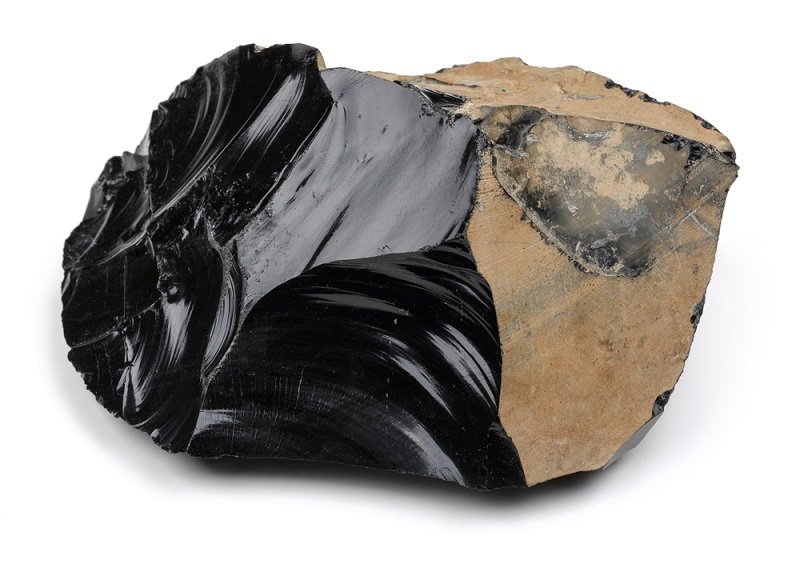
With its inky black color and vitreous luster, obsidian is undoubtedly one of the most striking igneous rocks. This volcanic glass forms from the rapid cooling of rhyolitic lava that is rich in silica. As the molten rock meets air or water, it chills almost instantaneously, creating a natural glass.
Obsidian’s unique properties stem from its lack of crystal structure. With no time to crystallize, the molecules froze into place, granting obsidian its amorphous quality. This also produces its conchoidal fracture and sharp edges when broken, which gave rise to obsidian’s extensive use in tools and weapons throughout human history.
In fact, expertly crafted obsidian blades can have cutting edges thinner than even high-quality surgical steel scalpels today. Ancient cultures ranging from the Aztecs to the Egyptians valued the rock’s ability to yield extremely sharp tools and ornamental objects.
Granite

With its speckled appearance and coarse texture, granite is one of the most abundant intrusive igneous rocks in continental crust. This iconic stone forms deep underground as molten magma slowly crystallizes over millions of years. The leisurely cooling allows large crystals of quartz, feldspar, and mica to grow, producing granite’s distinctive mineral composition.
Granite’s prevalence in the continental plates stems from crystallizing below Earth’s surface. As opposed to extrusive rocks from lava flows, intrusive granites solidify beneath the crust in plutons. Upheaval and erosion later expose these granite bodies at the surface as durable outcrops.
Granite’s resilience and aesthetic qualities have made it a constructors’ favorite for millennia. Ancient civilizations from Egypt to China utilized the stone’s compressive strength and polishability in monuments and sculptures. Today, dimensioned granite slabs and tiles cover buildings, kitchens, and public spaces globally.
From ancient temples to modern cities, granite has indelibly etched itself into human architecture and culture. Its enduring beauty and accessibility ensure granite will maintain a prominent place among building materials for ages to come. Granite’s journey from magmatic origins to human-crafted marvels is an enduring part of our planet’s profound geology.
Rhyolite
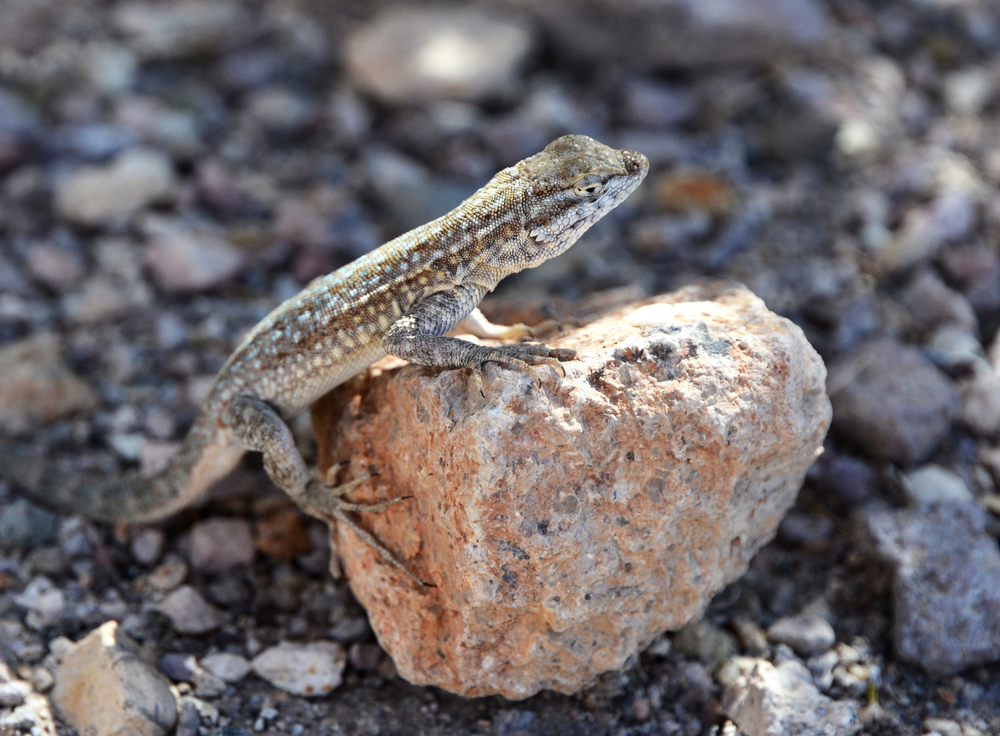
Rhyolite are fine-grained extrusive igneous rocks that are light in color. They are usually made up of quartz and feldspar minerals. They normally possess a smooth surface.
Sedimentary Rocks
Sedimentary rocks are formed at the surface of the Earth. This can take place either in water or on land. Sedimentary rocks are exactly what they sound like…sediment.
Sedimentary type rocks are layered accumulations of different kinds of sediments, such as fragments of rocks, minerals, and even animal and plant material.
Most sedimentary rocks become cemented together by the minerals and chemicals that they contain. Sometimes these layers are even held together by electrical attraction. But they’re are also sedimentary rocks that never really fuse together and remain loose.
All of these multiple layers of sedimentary rock generally run parallel (or nearly parallel) to the Earth’s surface. But you’ll also notice while out in the field that some of these layers run at high angles, and are not parallel to the earth’s surface. If you see this, then you know that there’s been some kind of major geological movement that moved that layer of rock after it was formed.
As a matter of fact, sedimentary rocks are forming around us all the time.
- Sand and gravel on beaches or in river bars look like the sandstone and conglomerate that they will eventually become.
- Compacted and dried mud flats harden into shale.
- Scuba divers who have seen mud and shells settling on the floors of lagoons find it easy to understand how sedimentary rocks form.
All together, there are three basic types of sedimentary rock:
Clastic sedimentary rocks – such as breccia, conglomerate, sandstone, siltstone, and shale are formed from mechanical weathering debris.
Chemical sedimentary rocks – such as rock salt, iron ore, chert, flint, some dolomites, and some limestones, form when dissolved minerals precipitate from solution.
Organic sedimentary rocks – such as coal, some dolomites, and some limestones, form from the accumulation of plant or animal debris.
Examples of Sedimentary Rocks
Below are a few examples of the most popular types of sedimentary rocks.
Breccia
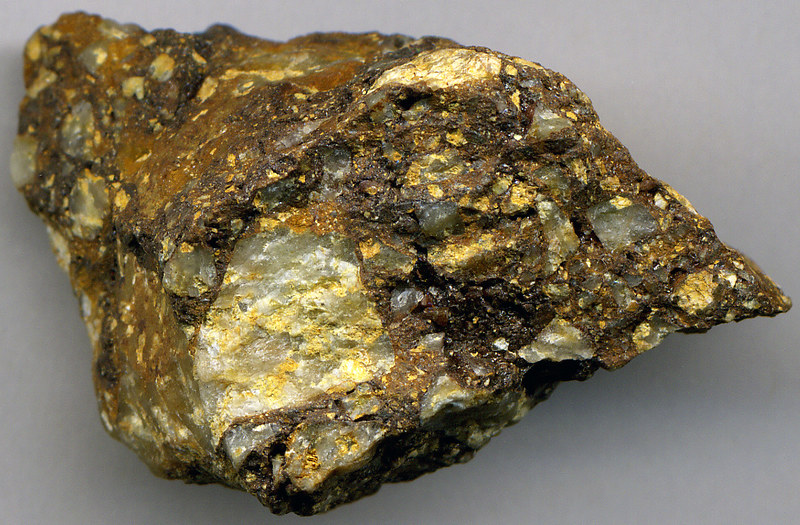
With its jagged jumble of angular rock fragments, breccia is a conglomerate that reveals the geologic forces behind its formation. The shard-like clasts in breccia result from mechanical fracturing of rock rather than prolonged weathering and transport. Cemented by calcite, silica, or iron oxides, these fragments come together to form a coarse breccia matrix.
Several geological processes can generate breccia’s shattered components. Tectonic grinding along faults shatters rock into cataclastic breccia. Explosive volcanic eruptions spit out lava blocks among ash to form volcanic breccia. On hillsides, gravity fractures rock debris that accumulates as slope breccia deposits. Sudden compressive shock from meteor impacts also creates impact breccia with fractured clasts radiating from the crash site.
In all its forms, breccia provides unequivocal evidence of the mighty forces that have fractured, transported, and consolidated rock. The telling textures of this conglomerate reflect intense moments in the geological timeline, captured and preserved for ages. From violent extrusive eruptions to tectonic collisions, Earth’s most dramatic processes come to light in breccia.
Conglomerate
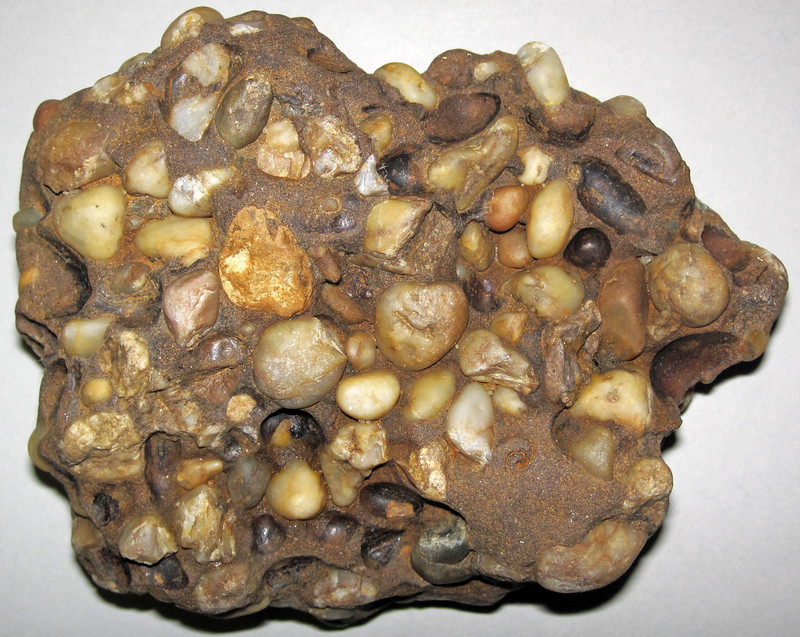
With its medley of rounded pebbles and cobbles, conglomerate exemplifies the sculpting force of nature. The smooth, worn clasts in this sedimentary rock point to prolonged transport and collision from their original bedrock sources. Tumbling within ancient rivers, oceans, or glaciers polished and shaped these rock fragments over time.
Eventually, the traveled clasts settled and consolidated, fused by mineral cement like calcite or silica. A fine-grained matrix wrapped around the larger cobble-sized clasts, composed of sand, silt, or cement. This completed conglomerate’s mosaic-like texture, neatly encapsulating a winding geological journey.
Conglomerate’s telltale rounded components reveal the gradual work of erosion, weathering, and deposition. As clasts journeyed through dynamic systems, from torrential streams to crashing shorelines, their forms evolved. Their smoothed shapes chronicled each impact along the way.
Sandstone

With its fine granular texture, sandstone exemplifies the artistic touch of wind and water. This classic sedimentary rock forms from consolidated sand-sized grains of eroded rock material. Over time, wind and water transport these tiny fragments, gradually sorting them by size before depositing them in sedimentary layers.
The composition of the tiny grains making up sandstone depends on the original bedrock source. Quartz-rich sandstone often forms from granite or gneiss, while sandstone with abundant feldspar suggests volcanic origins. The color also varies based on mineral content, from red hues of iron-oxide to gray, green, or white.
After deposition, the sand layers compress and cement together over time, fused by mineral deposits like silica or calcite. The resulting sandstone often retains visible sedimentary structures from the original transport and water deposition. Cross-bedding and ripple marks etched into sandstone reveal the flowing waters that left their mark.
Shale
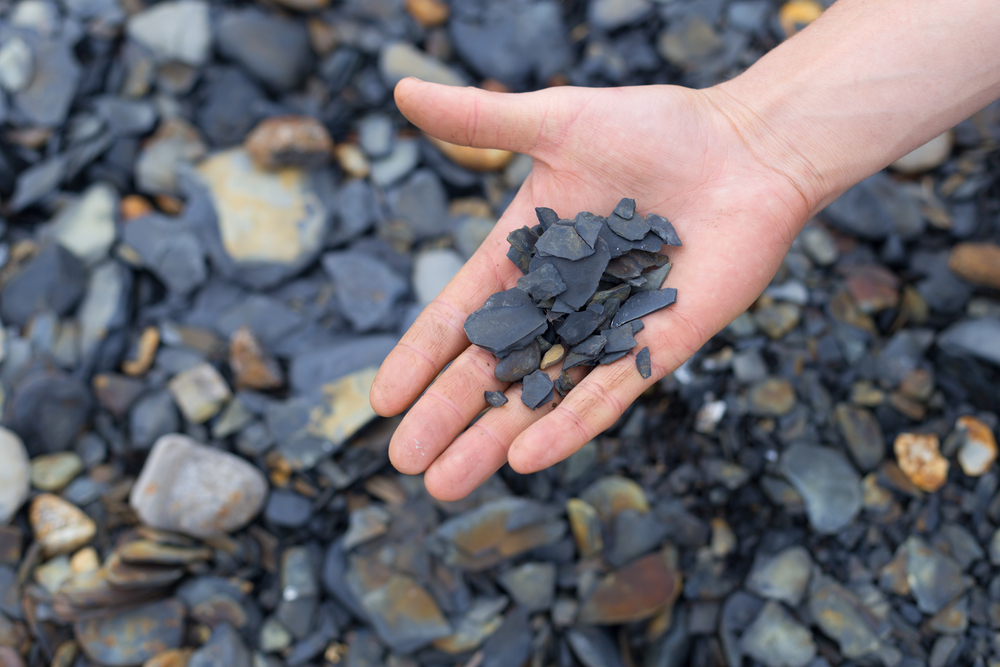
With its fine laminations and fissility, shale reveals the delicate touches that form sedimentary rock. This soft, splintery mudstone results from the compaction of clay and silt-sized particles that settled on the floors of low-energy environments. Still waters allowed the slow accumulation of mud that would become shale.
The thin, parallel layers visible in shale showcase seasonal or gradual changes in deposition over time. Occasional rippled bedding and fossils provide clues to shale’s quiet aquatic origins. This stands in contrast to shale’s eventual tectonic fracturing and uplift onto dry land.
When buried deep, shale’s impermeability and carbon-rich composition aid the process of petroleum formation. Fracturing shale units then allows extraction of oil and natural gas it helped generate. Though a soft rock initially, heat and pressure transform shale into slate and phyllite over time.
Limestone

With its soft texture and effervescent reactions, limestone stands out among sedimentary rocks. Composed predominately of calcium carbonate, this carbonate rock forms mainly through the accumulation of marine organisms’ shell debris and calcium-rich ooze.
As tiny skeletal fragments from coral, shellfish, and plankton accumulate on ocean floors, they fuse over time into solid limestone. Chalk varieties stem from particularly fine-grained planktonic remains, while fossil-rich limestone often forms in shallow reef environments.
Limestone comprises about 10% of all sedimentary rock layers. Its high solubility in weak acids leads to the sculpting of limestone cave systems and karst landscapes, creating a haven for biodiversity. Quarrying of limestone dates back to ancient Egyptian pyramid-building, and it remains a popular building material.
Chert
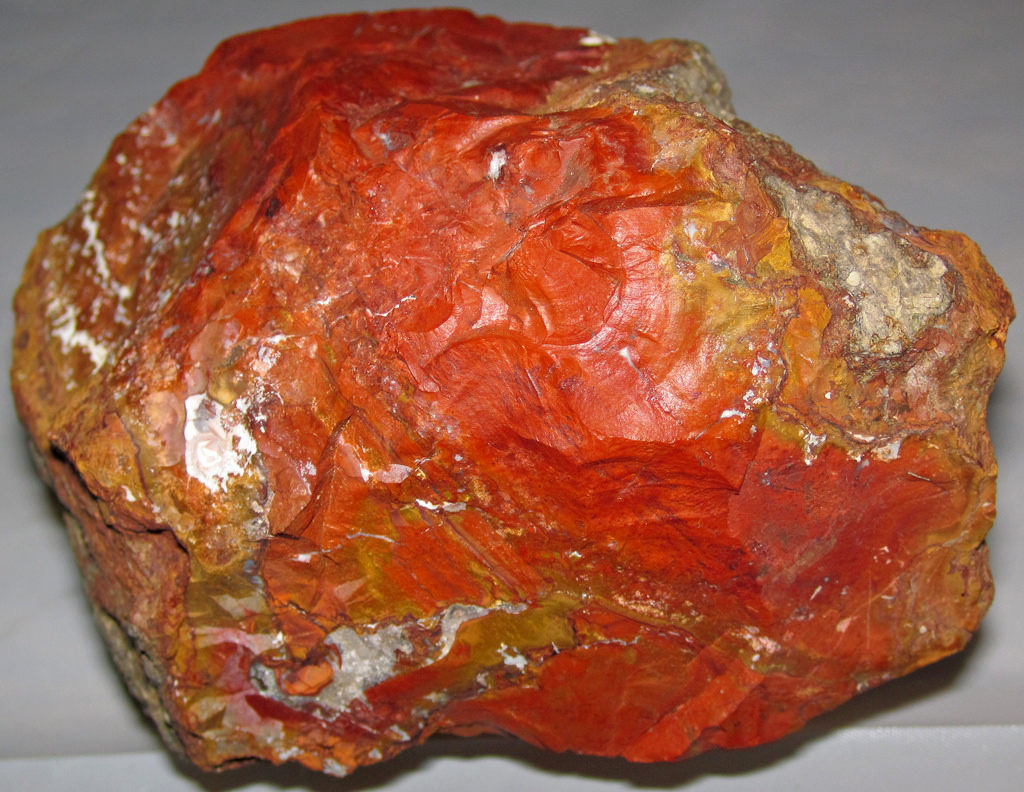
With its waxy luster and globular patterns, chert is a mesmerizing microcrystalline quartz rock. It forms predominately through the lithification of siliceous oozes deposited on ancient sea floors. Slow accumulation of dissolving siliceous microfossils and sponge spicules created the silica-rich muck that transformed into chert.
Dense masses of microscopic quartz crystals give chert its smooth, splintery fracture and notable durability. Nodules of chert often occur interbedded within limestone and dolostone strata, creating picturesque banded patterns. The red and brown hues common in some chert stem from iron oxide inclusions.
Chert’s utility and beauty secured its place in human industry and culture. Its fracture predictability allowed shaping into stone tools, while chemical resistance made it ideal for arrowheads and spear points. Chert even accrued spiritual meaning, with cultures from the Americas to Europe fashioning it into ceremonial objects.
Metamorphic Rocks
Finally, Metamorphic rocks. What are they? Well, sometimes the other two types of rocks, sedimentary and igneous rocks, can be under such high pressures or intense heat so high that the rocks actually “morph”, or change. These changes rocks become metamorphic rocks.
This change to metamorphic rock takes place very deep within the earth’s crust. The process of this change does not melt the rocks like you would think, but instead what it does is literally transform them into rocks that are more dense and compact.
Examples of Metamorphic Rocks
Below are a few examples of the most popular types of metamorphic rocks.
Quartzite
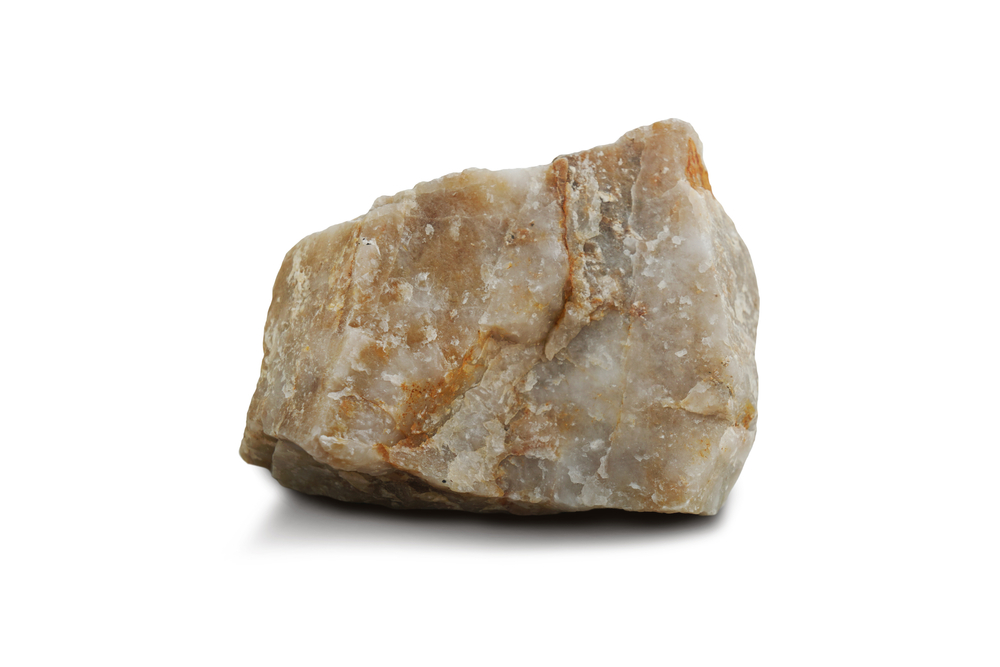
With its glassy gleam and granular texture, quartzite exemplifies metamorphic splendor. This decorative rock originates as pure quartz sandstone before heat and pressure transform it over millions of years. As temperatures rise, the quartz grains recrystallize and interlock to form solid, metamorphic quartzite.
During recrystallization, iron oxide and other mineral impurities are expelled from the quartz, leaving behind a light color. The resulting quartzite is a hard, durable rock made of interlocking quartz grains. Quartzite often occurs in shades of white, gray, or yellowish-brown.
Quartzite frequently exhibits distinctive banding inherited from the original sandstone layers. Ripples and cracks may also remain visible from its sedimentary past. This intriguing combination of sedimentary and metamorphic textures is quartzite’s hallmark.
Marble

With its ornate swirls and pristine white luster, marble captivates the eye and imagination. This metamorphic rock derives from limestone or dolostone that endured intense heat and pressure deep below Earth’s surface. As temperatures rose, the carbonate minerals recrystallized into an interlocking mosaic of calcite or dolomite crystals.
The purest marble emerges snowy white, but veining and mottling from mineral impurities creates marble’s decorative appeal. Ribbons of gray, black, or green weave through white backgrounds, evidence of silt, sand, iron oxides, or serpentine trapped within. Each marble variety exhibits a unique artwork etched by metamorphic forces.
Marble’s allure and rock-solid strength have kept it at the foundation of human sculpture and construction for millennia. From the Parthenon columns of Ancient Greece to the Taj Mahal’s onion domes, marble has been sculpted into Cultural icons across the ages.
Slate
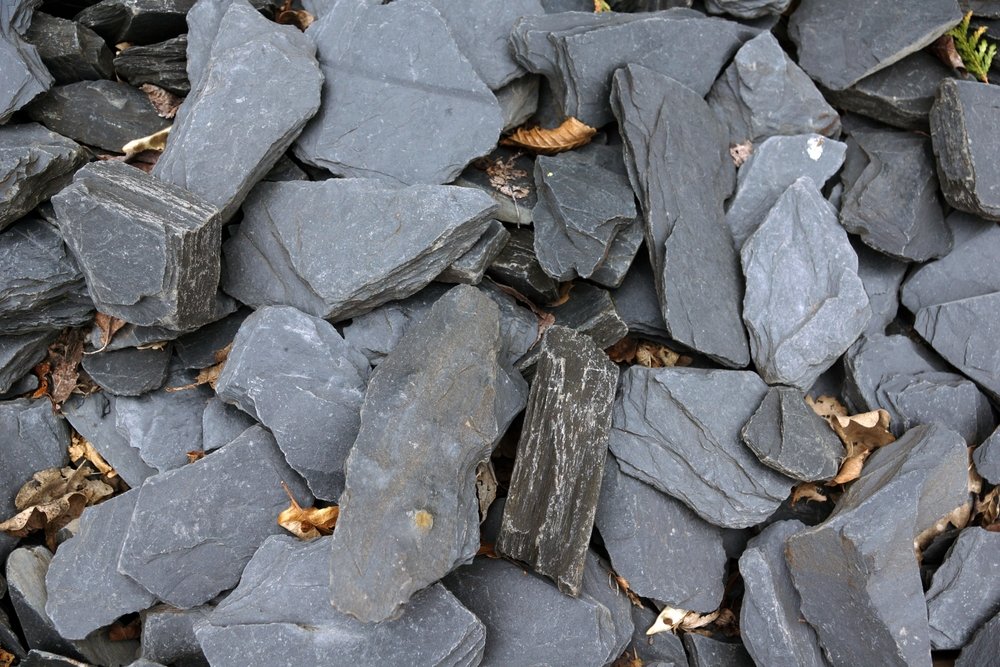
With its smooth cleavage planes and somber hues, slate showcases the transformative power of heat and pressure. This metamorphic rock forms as accumulating clays and muds are buried deeper, subjecting shale or mudstone to rising temperatures underground. The increased pressure and heat recrystallize the fine mineral grains, creating slate.
The characteristic cleavage planes in slate are evidence of its origins in sedimented clays. As the flaky minerals realign perpendicular to pressure during metamorphism, they develop the parallel splits that allow the stone to fracture into smooth sheets. The typical colors of slate range from purple and red to green, gray, and black based on original sediment composition.
Slate’s ability to split into thin, flat sheets has long been utilized for architectural purposes. Historic uses include roof shingles, blackboards, and pool table tops. While less common today, slate still accents modern spaces with its subtle luster and texture.
Schist
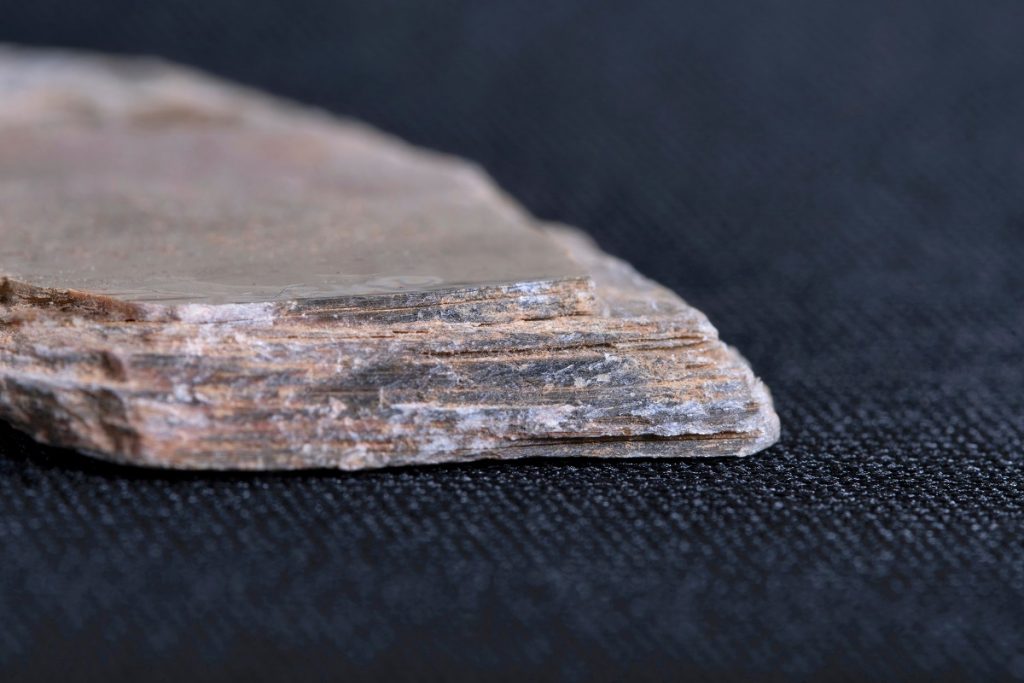
With its glittering mineral grains and foliated texture, schist beautifully displays the artistry of metamorphism. This medium-grade metamorphic rock forms under intense heat and pressure that aligns and segregates mineral layers in the original rock. The platy or elongated minerals recrystallize into sheets and lenses as pressure squeezes and realigns them.
The composition of schist depends on its parent rock, but often contains flaky minerals like mica or elongated amphibole and pyroxene crystals. Quartz and feldspar may also be interspersed between lustrous layers. The resulting schist can shimmer with flecks of mica or appear banded from segregated mineral growth.
Schist frequently contains intrusions of pegmatite or quartz that accentuate its foliated appearance. Relics of the original rock’s sedimentary structures may still be visible despite recrystallization.
Gneiss
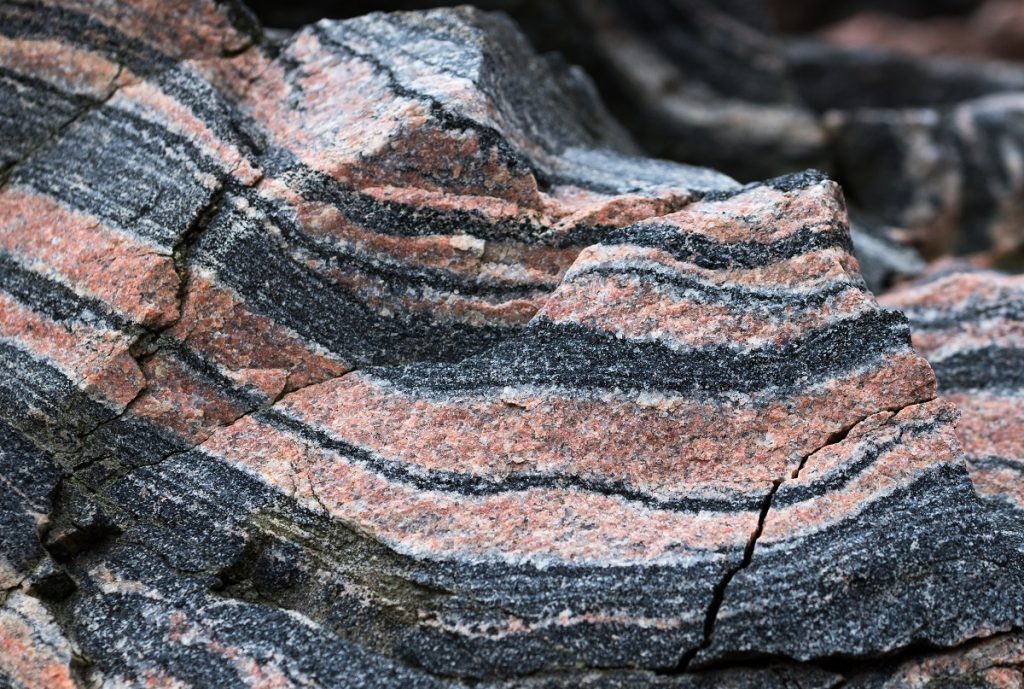
With its banded patterns and mineral richness, gneiss displays hallmarks of a complex geological past. This high-grade metamorphic rock forms under intense heat and pressure conditions that recrystallize and segregate mineral layers in the parent rock. Dark amphibole, pyroxene, and biotite crystals separate from lighter quartz and feldspar bands.
The characteristic gneissic banding forms as minerals sort themselves into alternating dark and light colored layers during metamorphism. Coarser gneiss may exhibit swirling textures as minerals mobilize and mingled during deformation. Chemical interactions may also produce new minerals like garnet and kyanite.
Gneiss often contains deformed pegmatite intrusions that accentuate its banded appearance. Though profoundly transformed by metamorphism, remnants of sedimentary structures may persist from the original rock substrate.
- 7 Of The Largest Gold Nuggets Ever Found…Ever! - December 21, 2023
- Find Gold On Your Property? Here’s Why You Should Think Twice Before Spreading the News - December 21, 2023
- The Opalized Crab Claw (And How It Formed) - September 14, 2023
- Online rock and mineral club for collectors of all levels!
- Find community with like-minded rock and mineral enthusiasts.
- Monthly Giveaways!
- Free Access to Entire Digital Library of Products (annual memberships)


